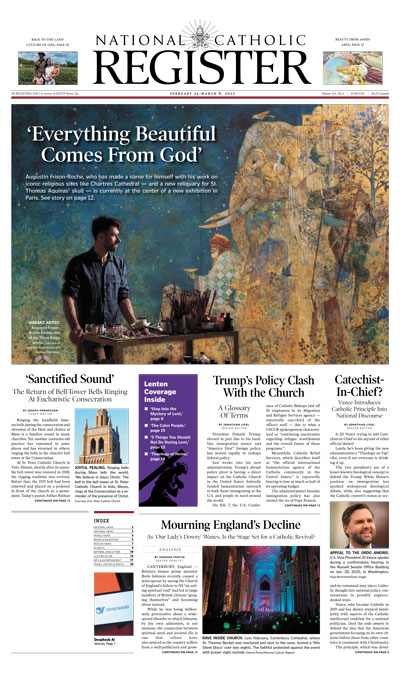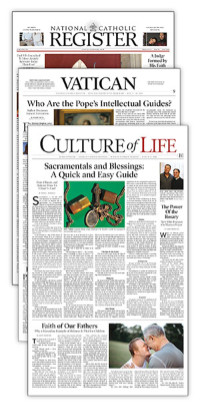New Pope Must Correct the Declining Course of Catholicism in Latin America
COMMENTARY: Pope Francis’ successor should address four main aspects: persecution, social doctrine, missionary withering and poor governance.

A plurality of the Catholic Church is in Latin America, at roughly 40% of the global Catholic population. The election of the Argentinian Pope Francis in 2013 brought fresh hope for a new flourishing of the Church in his native continent.
It has not turned out that way, and the dozen years of the pontificate have marked a falling backwards of the Church in Latin America. This papacy’s failure to improve the fortunes of the faith in Latin America has four main aspects: persecution, social doctrine, missionary withering and poor governance.
The health of the Church in Latin America is therefore a pressing issue for the cardinal-electors heading into the conclave, which will begin Wednesday. That requires a clear-eyed assessment of the current situation.
Latin America cannot be a marginal issue for the conclave; its sheer demographic weight means that is central. Pope Francis was able to bring something of the popular piety of his region to the Vatican — the papal Mass for Our Lady of Guadalupe is now a fixed annual appointment at St. Peter’s — as well as a sense of theology that resonates with the experience of the ordinary faithful.
How often did the Holy Father praise the wisdom of the abuela? Nevertheless, the Church in Latin American faces serious challenges — which requires the Church universal, in the person of the next pope, to pay attention.
Headlines such as the “The Catholic Church is Losing Latin America” have been running for decades, but that they kept running during the Francis pontificate demonstrated that any “Francis effect” in Latin America proved illusory.
Persecution
Venezuelan dictator Hugo Chavez died in March 2013, the same week Pope Francis was elected. Latin America had had a very good week, it appeared. Was new hope possible for oil-rich-but-economically-mismanaged Venezuela?
The succeeding regime of Nicolás Maduro turned out to be much worse, with Venezuela pauperized to the extent that millions fled as refugees. Maduro increased political repression and religious persecution, rhetorically attacking the Catholic bishops and restricting Catholic institutions.
Cardinal Pietro Parolin, the Holy Father’s secretary of state, had served as apostolic nuncio in Caracas from 2009 to 2013. He adopted then a policy of “positive neutrality,” which sought not to take sides between the regime and the Catholic faithful.
Cardinal Parolin, with the Holy Father’s approval, brought the same policy with him to the Vatican. It proved such a failure that when Venezuela’s courageous bishops would denounce the regime, Maduro would taunt them by telling them that they should be more like Pope Francis, whom he found more congenial and cooperative.
Others noticed the tyrant-friendly — at least in Maduro’s estimation — approach in Venezuela. Daniel Ortega in Nicaragua, having returned to the presidency after his first run in the 1980s, unleashed a fierce persecution against Catholics. He expelled the apostolic nuncio, threw the Missionaries of Charity out of the country, imprisoned bishops and priests without trial (some of whom were later exiled to Rome), confiscated Catholic media institutions, monitored the mobile phones of priests and required state supervision of their preaching.
In the face of twin tyrannies in Latin America, the Francis-Parolin approach has proved impotent.
Social Doctrine
Pope St. John Paul II began his pontificate with a triumphant visit to Mexico in January 1979. Though it was remembered for the millions massed in the streets for the first of John Paul’s sensational pilgrimages, it was at Puebla that he proposed a social vision for Latin America. He spoke about the need to purify liberation theology of its Marxist contaminants and outlined the Catholic principles for a free and just society.
Pope Francis was fierce in his denunciations of an “economy that kills” and a “throwaway society.” He demonstrated solidarity with the poor, but he struggled to provide a positive vision rooted in Catholic social teaching. Unlike John Paul for his native Poland, or Pope Benedict XVI on the foundations of Europe, it was not clear what Pope Francis envisioned for his continent.
Was he sympathetic or opposed to the Latin American cult of the strongman, manifest in the Peronism of Argentina?
The Holy Father repeatedly made clear that he was not a communist — as if the pope could ever be! — but gave a lot of attention early in his pontificate to the Castros in Cuba and Evo Morales in Bolivia. It was the latter — known for his Marxist and anti-Catholic positions — who presented Pope Francis with a sacrilegious hammer-and-sickle crucifix, surely the strangest gift in the history of papal travel. The Holy Father professed not to “take offense.”
Despite the high priority he gave to refugees, Pope Francis never forthrightly addressed the largest refugee crisis of his pontificate: that of Venezuelans fleeing the repression and grinding poverty of the Maduro regime. He was eloquent in denouncing those who took advantage of poor nations in debt, but had no constructive guidance for how nations ought to manage their fiscal affairs. Regarding his native Argentina, steadily made poorer by its own governments for nearly a century, Francis had nothing to say about the scandal of a rich country making itself poor.
Missionary Exhaustion
Cardinal Jorge Bergoglio’s speech at the pre-conclave meetings in 2013 attracted a lot of attention. It was a plea for missionary fervor, for a Church that does not lock Jesus up in the sacristy, but goes out with missionary zeal. It fit with the bold call for a continental mission at the 2007 Aparecida conference of Latin American bishops, at which Cardinal Bergoglio played a key role.
Yet by the 2019 Amazonian Synod, it was clear that missionary energies were flagging in Latin America. The great continental mission never took off, and, instead, the Church in Latin America was turned inward — geographically and ecclesially — wondering if a new transnational episcopal conference for the region was what was needed. Bureaucracy — a foreshadowing of the multiyear Synod on Synodality — had replaced mission.
As for the question about whether married priests were needed in the Amazon, Pope Francis was withering in his assessment of how miserably his Latin American brothers had failed, noting that they preferred the “mission” of comfortable rectories in rich countries instead of providing the sacraments in their own backyard.
“It is noteworthy that, in some countries of the Amazon Basin, more missionaries go to Europe or the United States than remain to assist their own Vicariates in the Amazon region,” he wrote.
Damaging Governance
The Holy See does not directly govern local Churches, but to the extent that Pope Francis directly engaged himself in Latin American governance, it has had poor results.
In the first months of the papacy there was the appointment of Bishop Gustavo Zanchetta in Argentina. His subsequent scandals, including Pope Francis arranging for a soft landing in Rome, are a permanent stain on the personal judgment of the Holy Father, as he handled the entire case himself.
More damaging still was the catastrophic visit to Chile in 2018, where the mishandling of the Barros affair — the promotion of a bishop who had ignored allegations of sexual abuse against his own mentor — led to a conflagration which threatened the pontificate.
The Chilean bishops had asked Pope Francis not to promote Bishop Juan Barros, but they were forced into the role of scapegoat to preserve the Holy Father’s diminished credibility. The Chilean bishops were summoned en masse to Rome, where all of them submitted their resignations.
It saved the Pope for another day, but Chile 2018 marked the end of any hope that a Latin American pontificate would mark a resurgence for the Church in Latin America.
Pope Francis had already committed to visit Panama in 2019 for World Youth Day, but otherwise he never set foot in Latin America again. Even when the bishops of El Salvador asked him to make a short side trip from Panama for the canonization of Archbishop Oscar Romero — a genuinely heroic Latin American bishop — Pope Francis declined.
Despite hints about visiting his native Argentina over the last seven years, it was clear to close observers of the pontificate that he would never risk going back to Argentina, lest a visit do the same damage as it did in Chile. Far from being able to make a papal visit, Pope Francis struggled even to appoint bishops in the capital region, with multiple resignations in La Plata and Mar del Plata.
The first Latin American pontificate brought greater attention to Latin America. That attention needs to be sustained, with the cardinal-electors choosing a man who might built on what Pope Francis established and make the needed course corrections for the future.
- Keywords:
- latin america
- 'pope francis

















